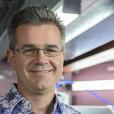
Showing 121 - 140 of 509 results
How to Access MX3
Ion channels and chronic pain
ANSTO partners with Haymarket HQ to attract deep tech investors to Australia
Stopping yellow spot fungus that attacks wheat crops
Collaborators used X-ray imaging to understand the fine detail of how a damaging fungal pathogen reduces leaf function and grain yield of wheat crops.
Our understanding of the atom powers ANSTO's nuclear and accelerator research techniques
Scientists at ANSTO characterise structures with atomic detail using probes such as x-rays, electrons, neutrons and ions.

The Australian Synchrotron
A world-class national research facility that uses accelerator technology to produce a powerful source of light-X rays and infrared radiation a million times brighter than the sun.
Atomic structure behaves like gears and torsion-springs to contribute to extreme compressibility
Putting science to work in Southern Sydney
Promising new proton conductor for next-generation fuel cells
ANSTO has contributed to work by scientists from the Tokyo Institute of Technology on a promising proton conductor for next-generation ceramic fuel cells.

Role at ANSTO
Dr Joseph Bevitt is a senior instrument scientist on the Dingo radiograph/tomography/imaging station, and scientific coordinator for the Australian Centre for Neutron Scattering.
TSPO: Ancient gene ignites potential for drug development

NDF granted $2.8m NCRIS funding for expansion and development of capabilities

Role at ANSTO
Synchrotron-studied protein sheds light on Parkinson’s, stomach cancer, melanoma
Collaboration across the Tasman has enabled Australian and New Zealand researchers and scientists to shed light on a protein involved in diseases such as Parkinson’s disease, gastric cancer and melanoma.

Principal Scientist – X-ray Fluorescence Microscopy
Energy use and emissions
Detailed data on ANSTO electricity use and CO2 emissions for FY2022 - FY2023

Career Statement and Role at ANSTO
